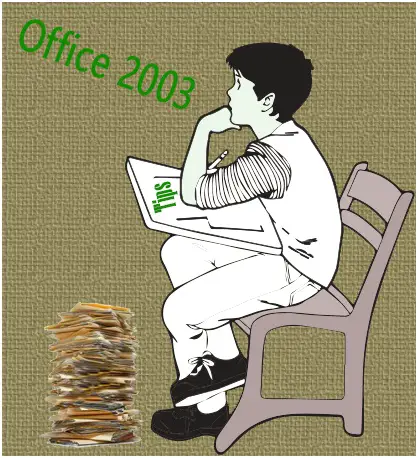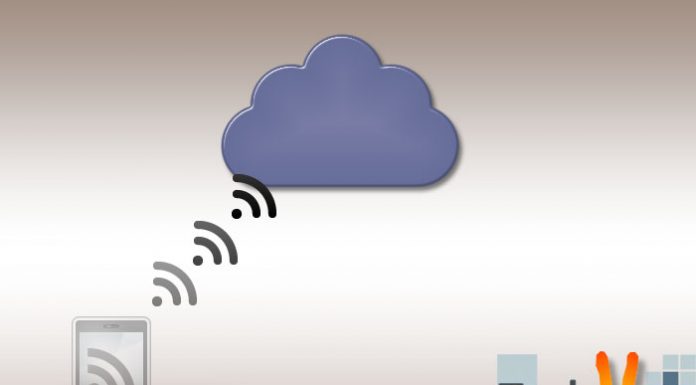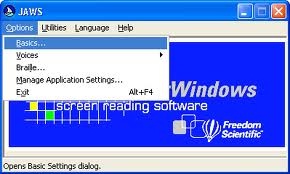Some useful Office 2003 tips
Word 2003 tips
1. You can exhort Ctrl+Q to eliminate any exact paragraph info and start only the paragraphs communication information. It's a really utilitarian way to repeat a paragraph to its styles information without removing eccentric formats such as over valiant and italics.

You can also press Ctrl+Shift+N to allot the default rule music info to the paragraph. Virtually the aforesaid as Ctrl+Q, but of layer Ctrl+Q doesn't replace the call.
2. Using few paragraphs formatting commands and buttons act as toggle switches, you can lose the formatting on or off. One can exchange that paragraph to a bulleted portion by clicking the Bullets secure on the Formatting toolbar.
3. If you cut and paste text from other articulate writing or another program and bonk quality reformatting that paragraph, cut the matter (Ctrl+X) superior Edit → Paste unscheduled, and decide unformatted text. All of the formatting is removed.
4. It’s feasible to make idiosyncratic blocks of text, unconnected by a white ancestry if you're asking, within a paragraph. Instead of pressing Enter to go to the next origin, press Shift+Enter and Promise inserts a line escape instead of a paragraph exceed.
5. Do not create this dual placement (an empty differentiation between every connecter of text) by pressing Preserve or Shift+Enter at the end of apiece product. If then, you'll regain it a nightmare to correct everything when you supply or disappear a matter during writing. Use a Paragraph formatting and economize yourself in hours of process.
6. You can employ dimensions other than points to identify spacing. Type .25inch in the box to make quarter-inch of spacing. To put in spacing of two centimeters, type 2 cm to add spacing of one pica, and type 1 pi.
7. One of the most usual word-processing mistakes is using spaces to align text. In most cases, the matter is in proportionate face. Because proportional-font characters decide up varied amounts of interval, nevertheless, the schoolbook in that font cannot coordinate correctly with this method. Using tabs ensures that your matter is aligned perfectly and makes it such easier to add settings.
8. The ruler automatically scrolls to the left when you drag the Left Indent or First Line Indent marker to the left side of the left margin. If you want to scroll into the left margin on the ruler without moving the indent markers, first make sure that you’re in Normal view (View →Normal). Then hold down the Shift key as you click the left scroll arrow on the horizontal scroll bar.
9. Another way to set indention, Choose (Tools → AutoCorrect) Options and click the AutoFormat as you type tab. Make sure that the Set Left and first-Indent with Tabs and Backspaces check box is selected. Now, you’ll be setting the indent for that paragraph, when you press Tab and then type a paragraph.
10. To use different lines on different edges, select your first line's style, color, and thickness. Then click on an edge of the square in the Preview box inside the Borders and Shading dialog box; select another line and click on another edge; and so on.
11. You can quickly convert a numbered list to a bulleted list by selecting the numbered list and then click the Bullets button in the Formatting toolbar, and vice versa.
12. Another way to use these commands is to right-click on the first entry in the list and select from the pop-up menu Restart Numbering or Continue Numbering.
13. If you don’t want a certain paragraphs to be hyphenated automatically, select those paragraphs and then choose Format Paragraph. In the Paragraph dialog box, select the Line and Page Breaks tab and then they will not Hyphenated check box.
14. To turn the display of comments on and off, you need to click the Show drop-down arrow in the Reviewing toolbar and select Comments from the list.
15. For deleting comments, place the cursor immediately after a comment and press the Backspace key twice. Alternatively, you can right-click inside the comment, or in the comment text inside the Reviewing pane, and select Delete Comment.
16. You also can use Words Find feature to search for comment marks without specifying a particular comment or reviewer. Just choose Edit → Find to open the Find and Replace dialog box. Type desired word or text into the Find What box. When you use this feature to find a comment, Word opens the Reviewing pane and then moves the insertion point to the next or previous comment (depending on your Search rule) inside the Reviewing pane.
17. If you want to print the document, be sure to use a light color for highlighting text. This way, the text shows through the highlight.
18. The View tab of the Options dialog box (Tools → Options) includes an option for showing or hiding the highlight both on-screen and when the document prints.
19. Before you begin marking a document, save a copy of it under a different name. That way, you can always go back to the original document if any problems arise or you need to double-check something.
Excel 2003 tips
20. Most people prefer to do most of their work with maximized workbook windows. This enables you to see more cells and eliminates the distraction of other workbook windows getting in the way.
21. Use the Window → New Window command to open a new window in the active workbook.
22. When you right-click on any of the tab-scrolling buttons to the left of the worksheet tabs, Excel displays a list of all sheets in the workbook. Thus activate a sheet by selecting it from the list quickly.
23. To insert more than one worksheet at a time, hold down the Shift key and click a range of worksheet tabs. When you issue the command to insert a worksheet, Excel will add as many worksheets as the number of worksheet tabs you selected before issuing the command.
24. To select & delete multiple sheets, press Ctrl while you click the sheet tabs that you want to delete. To select a group of contiguous sheets, click the first sheet tab, press Shift, and then click the last sheet tab.
25. To edit the worksheet name rather than to replace it completely, it’s usually easier to double-click the sheet tab and then click within the name where to make a change.
26. To move or copy multiple sheets, first select the sheets by clicking their sheet tabs while holding down the Ctrl key. Then move or copy the set of sheets by using the methods just described.
27. To be more fully protected a workbook from unauthorized changes, use the Tools → Protection menu commands.
28. If the workbook is maximized when create a new window, you may not even notice that Excel has created the new window; but if you look at the Excel title bar, you’ll see that the workbook title now has: 2 append to the name. Select Window → Arrange and choose one of the options in the Arrange Windows dialog box to display the open windows.
29. Multiple windows make it easier to copy information from one worksheet to another by using Excel drag-and-drop procedures to do this. In addition, multiple windows are useful when examining formulas.
30. To compare two sheets in the same workbook, use the Window → New Window command to create a new window for the active workbook. Activate the first window; then choose Window → Compare side by side with. If more than two windows are open, you’ll see a dialog box that lets you select the window for the comparison. The two windows will be tiled horizontally, not really “side by side.” If you prefer a true side-by-side arrangement, select Window → Arrange, and select Vertical in the Arrange Windows dialog box.
31. If you press Ctrl+Home while the worksheet has frozen panes, the cell selector moves to the top-left unfrozen cell. You can move into the frozen rows or columns by using the direction keys or your mouse.
32. Zooming affects only the active worksheet. If you have a worksheet displayed in two different windows, you can set a different zoom factor for each of the windows.
33. To hide the row or column, drag the row or column’s border in the row or column heading. Drag the bottom border of a row upward or the border of a column to the left.
34. If hash symbols (#) fill a cell that contains a numerical value, the column isn’t wide enough to accommodate the information in the cell. Widen the column to solve the problem.
35. To change the default width of all columns, use the Format → Column → Standard Width command.
36. When paste in word, the result data looks the same regardless of whether the Paste or Paste Link option is selected.
37. While you’re creating a report, you could insert a normal Word table, but you can take advantage of Excel’s formulas and functions in an embedded Excel worksheet.
Outlook 2003 tips
38. To add or modify accounts with Outlook running, Choose Tools → E-mail Accounts to open the wizard.
39. One can open a single folder from another user’s mailbox by choosing File → Open → Other User’s Folder. With either method, you must either own the mailbox or have been given delegate access to it.
40. One can use the Remote Mail page to configure general options for using Remote Mail with the Exchange Server account. Remote Mail enables one to retrieve headers only and/or retrieve only those messages that fit the filter criteria you specify. The Accounts button doesn’t appear unless you have at least two accounts set up.
41. IMAP offers better security than POP3 because it uses a challenge-response mechanism to authenticate the user, rather than passing the password across the network as plain text.
42. One can click Test Account Settings when creating a POP3 account to send a test message through a specified outgoing mail server and attempt a logon to the incoming mail server. This helps to verify your settings before you finish creating the account.
43. Saving a message as text does not save any message attachments. Be sure to save any important attachments separately
Access 2003 tips
44. To begin creating a report in Design View, specify a table or query in the New Report dialog box is no need because it is possible to select the Record Source later on from the Properties sheet.
45. Double-click any field in the Available Fields list box to add it to the Selected Fields list box.
46. Also double-click any field in the Selected Fields list box to remove it from the box. Access then redisplays the field in the Available Fields list box.
47. One can change the way summaries are calculated by changing the Running Sum property of the field box in the Report Design window.
48. When run report and every other page are blank, the width of report exceeds the width of page. To fix this, decrease the left and right margin size or your report width. Sometimes, when move controls around, accidentally the report width make larger than original design.
49. One moves the Field List window by simply clicking on the title bar and dragging it to a new location.
50. To create a multiple-line label entry, press Ctrl+Enter to force a line break where you want it in the control.
51. To edit or enter a caption that is longer than the space in the property window, the contents will scroll as you type. Otherwise, open a Zoom box that gives more space to type by pressing Shift+F2.
52. One always check result by clicking the Print Preview button on the toolbar and zooming in on the page footer section to check the page number.
53. Select Format → Size → to fit to change the size of the label control text automatically.
54. To delete only the field control and keep the attached label control, first select the label control and then select Edit → Copy. Next, to delete both the field control and the label control, select the field control and press Delete. Finally, select Edit → Paste to paste only the copied label control to the report.
55. To move a label that is not attached, simply click any border (except where there is a handle) and drag it.
56. The global option Tools → Options — Forms/Reports tab — Selection Behavior is a property that controls the enclosure of selections.
57. To see more of the Field/Expression column, drag the border between the Field/Expression and Sort Order columns to the right.
58. One can create Group footer and set its Force New Page property in after Section.
Power point 2003 tips
59. To design the sample text of one presentation template in another, start with the one containing the good sample text. Then borrow the design from the other one later, pick the design first, and then the color scheme as you like.
Publisher 2003 tips
60. A vertical text box work just like a regular text box, except the text you type into it is turned 90 degrees to the right and reads from top to bottom.
61. Set the formatting for a text box before begin typing in it, or one can apply formatting to highlighted text.
Front page 2003 tips
62. Using shared borders with link bars is a method by which you can create a navigational system for your entire Web site.
63. If the Shared Borders option is grayed out on the Format menu, click Tools → Page Options, then click the Authoring tab. Click the Shared Borders check box to enable.
64. An easy way to add a line break is to press Shift+Enter.
















